Dogs, our faithful companions, need mental and physical stimulation to thrive. One of the best ways to provide this is through chew toys.
Not only do they keep your pup entertained, but they also promote dental health and alleviate boredom.
However, with the plethora of options available, finding the right chew toy can be daunting. Fear not!
In this comprehensive guide, we’ll delve into everything you need to know about dog chew toys, from types to safety tips.
Contents Overview
Preliminary Summary
Dog chew toys are more than just playthings; they’re essential tools for keeping your furry friend happy and healthy. Dogs have an instinct to chew, which helps keep their teeth clean and their minds engaged. Providing them with the right chew toys not only satisfies this instinct but also prevents destructive chewing behavior on your belongings. From durable rubber toys to interactive puzzles, the options are endless. Choosing the right toy depends on your dog’s size, age, and chewing habits. By offering a variety of textures and shapes, you can keep your pup entertained and mentally stimulated. So, whether it’s a tough chewer or a gentle nibbler, there’s a perfect chew toy out there to keep your canine companion content and occupied.
Why Are Chew Toys Important for Dogs?
Let’s delve into the details to understand the significance of these seemingly simple objects in the lives of our canine companions.
The Instinct to Chew:
From the moment puppies start teething to their adult years, dogs have an innate need to chew. This behavior isn’t just about destroying your favorite pair of shoes; it serves various purposes deeply rooted in their biology.
- Teething Relief: Just like human babies, puppies experience discomfort during the teething process. Chewing helps alleviate pain and soreness in their gums.
- Stress Relief: Dogs may chew when feeling anxious, bored, or stressed. It serves as a natural way for them to release pent-up energy and calm their nerves.
Physical and Dental Health Benefits:
Chewing isn’t merely a behavioral quirk; it also offers tangible health benefits for dogs.
- Dental Hygiene: Regular chewing helps remove plaque and tartar buildup, promoting better oral health and preventing dental issues such as gum disease and tooth decay.
- Jaw Strength: Gnawing on chew toys strengthens the muscles in the jaw, improving overall jaw health and functionality.
- Preventing Destructive Behavior: Providing appropriate chew toys can deter dogs from chewing on household items or furniture, saving your belongings from destruction.
Mental Stimulation:
Keeping dogs mentally stimulated is crucial for their well-being, and chew toys play a significant role in achieving this.
- Preventing Boredom: Dogs left alone for extended periods can become bored and resort to destructive behaviors. Chew toys offer mental stimulation and entertainment, keeping them occupied and content.
- Problem-Solving Skills: Certain chew toys, such as puzzle toys or treat-dispensing toys, require dogs to use their problem-solving skills, providing mental exercise and enrichment.
Types of Dog Chew Toys
Dogs have an innate need to chew, and providing them with appropriate chew toys not only satisfies this instinct but also promotes dental health and keeps them mentally stimulated. However, with a plethora of options available, it can be overwhelming to choose the right chew toy for your furry friend. In this comprehensive guide, we’ll explore the 10 best and recommended types of chew toys for dogs, catering to various preferences, sizes, and chewing habits.
- Rubber Chew Toys:
- Made from durable rubber material, ideal for aggressive chewers.
- Provides a satisfying chewing experience while promoting dental health.
- Available in various shapes and textures to keep dogs engaged.
- Rope Toys:
- Great for interactive play and chewing.
- Helps with dental hygiene by cleaning teeth and massaging gums.
- Choose ones made from natural, non-toxic materials to ensure safety.
- Nylon Chew Toys:
- Known for their toughness and longevity, suitable for power chewers.
- Helps redirect chewing behavior away from furniture and other items.
- Look for FDA-approved nylon toys to ensure they’re safe for your dog.
- Interactive Chew Toys:
- Incorporate treats or food puzzles to stimulate mental activity.
- Encourages problem-solving skills and alleviates boredom.
- Ideal for dogs who need mental stimulation along with chewing satisfaction.
- Dental Chew Toys:
- Specifically designed to promote dental hygiene by reducing plaque and tartar buildup.
- Often flavored to entice dogs, making them more enjoyable.
- Choose sizes appropriate for your dog’s breed and chewing style.
- Plush Chew Toys:
- Soft and comforting for dogs who enjoy carrying toys around.
- Provides a gentle chewing experience for light to moderate chewers.
- Opt for reinforced stitching to prevent tearing and ingestion of stuffing.
- Natural Chew Toys:
- Made from natural materials such as wood, antlers, or rawhide.
- Free from chemicals and additives, promoting safer chewing.
- Monitor your dog’s chewing to prevent splintering or ingestion of small pieces.
- Freezeable Chew Toys:
- Perfect for teething puppies or soothing sore gums.
- Freeze water or broth-filled toys to provide relief during hot weather.
- Offers a cooling sensation while satisfying the urge to chew.
- Floating Chew Toys:
- Ideal for water-loving dogs who enjoy retrieving toys in the pool or lake.
- Made from buoyant materials to ensure they stay afloat.
- Choose bright colors for visibility in the water.
- Edible Chew Toys:
- Treats and chews are made from digestible materials like rawhide, bully sticks, or dental chews.
- Provides a tasty reward while satisfying the urge to chew.
- Monitor your dog while they enjoy edible chews to prevent choking or overconsumption.
Choosing the Right Chew Toy
With a plethora of options available, ranging from rubber bones to plush toys, it’s essential to consider various factors to ensure you’re making the best choice for your canine companion.
Why is Choosing the Right Chew Toy Important?
Chewing is not only a natural behavior for dogs but also serves several essential purposes:
- Dental Health: Chewing helps to maintain healthy teeth and gums by reducing plaque buildup and preventing tartar accumulation.
- Mental Stimulation: Chew toys provide mental stimulation, preventing boredom and destructive behavior.
- Physical Exercise: Certain chew toys, such as interactive or treat-dispensing ones, can encourage physical activity and exercise.
- Stress Relief: Chewing can help alleviate stress and anxiety in dogs, especially during periods of separation or changes in routine.
Given the significance of chew toys in your dog’s life, it’s imperative to choose wisely. Let’s delve into the factors you should consider when selecting the perfect chew toy for your canine companion.
Factors to Consider When Choosing Chew Toys
- Size and Breed:
- Consider your dog’s size and breed when selecting a chew toy.
- Small toys may pose choking hazards for large breeds, while larger toys may be too cumbersome for smaller dogs.
- Opt for toys that are appropriate for your dog’s size to ensure safety and enjoyment.
- Durability:
- Choose chew toys made from durable materials that can withstand your dog’s chewing habits.
- Look for sturdy materials like rubber, nylon, or natural rubber compounds.
- Avoid toys that can easily break apart, as they may present choking hazards or cause intestinal blockages if ingested.
- Texture:
- Dogs have preferences for different textures when it comes to chew toys.
- Some may prefer soft toys, while others enjoy the challenge of harder textures that provide dental benefits.
- Experiment with various textures to determine what your dog enjoys most.
- Purpose:
- Determine the purpose of the chew toy.
- Toys can serve different functions, such as dental health, mental stimulation, or alleviating boredom.
- Choose toys designed to meet specific needs, such as dental chews for oral hygiene or puzzle toys for mental stimulation.
- Safety:
- Prioritize safety when selecting chew toys for your dog.
- Avoid toys with small parts that can be easily swallowed or sharp edges that can cause injuries.
- Look for products labeled as non-toxic and free from harmful chemicals.
- Age and Activity Level:
- Consider your dog’s age and activity level when choosing a chew toy.
- Puppies may benefit from softer toys designed for teething, while more active dogs may require tougher toys that can withstand heavy chewing.
- Tailor your selection to match your dog’s energy and play style.
- Preference:
- Take into account your dog’s preferences when selecting a chew toy.
- Observe which types of toys your dog gravitates towards during playtime.
- Consider factors such as shape, scent, and flavor to find a toy that will keep your dog engaged and entertained.
- Budget:
- Set a budget for chew toys and explore options within your price range.
- While quality and durability are important, there are affordable options available that still meet your dog’s needs.
- Consider the long-term cost-effectiveness of durable toys that last longer compared to cheaper alternatives that may need frequent replacement.
Safety Tips for Chew Toys
Chew toys are a popular choice for pets, providing both mental stimulation and dental health benefits. However, not all chew toys are created equal, and it’s essential to prioritize your pet’s safety. In this guide, we’ll explore valuable safety tips for choosing and using chew toys for your beloved companion.
Choosing Safe Chew Toys:
When selecting chew toys for your pet, keep the following considerations in mind:
- Material Matters: Opt for chew toys made from safe, non-toxic materials such as rubber, nylon, or natural fibers.
- Size and Shape: Choose toys appropriate for your pet’s size and breed to prevent choking hazards. Avoid small toys that can be easily swallowed.
- Durability: Look for durable toys designed to withstand your pet’s chewing habits. Avoid toys that may break apart into small pieces, which can be ingested and cause digestive issues.
- Texture: Select toys with varied textures to promote dental health by helping to remove plaque and tartar buildup.
- Avoid Harmful Additives: Steer clear of toys containing harmful chemicals, dyes, or artificial flavors that could pose health risks to your pet.
Safe Usage Practices:
Once you’ve selected the perfect chew toys for your pet, follow these safety tips during playtime:
- Supervision is Key: Always supervise your pet while they’re playing with chew toys to ensure they’re using them safely and to intervene if any issues arise.
- Regular Inspection: Routinely inspect chew toys for signs of wear and tear, such as fraying or damage. Replace worn-out toys promptly to prevent potential choking hazards.
- Rotation: Rotate your pet’s chew toys regularly to keep them engaged and prevent boredom. This also allows you to monitor the condition of each toy more effectively.
- Introduce Gradually: Introduce new chew toys gradually to gauge your pet’s interest and ensure they’re suitable for your pet’s chewing habits.
- Storage: Store chew toys in a designated area when not in use to prevent accidental ingestion or damage.
Additional Tips:
Here are a few extra tips to enhance your pet’s chewing experience:
- Interactive Toys: Consider interactive chew toys that dispense treats or engage your pet’s problem-solving skills for added mental stimulation.
- Frozen Treats: Freeze chew toys or stuff them with frozen treats to provide relief for teething puppies or to help soothe sore gums.
- Size Up as Your Pet Grows: As your pet grows, periodically reassess their chew toys and upgrade to larger sizes to accommodate their changing needs.
Bottom Line
Dog chew toys are more than just playthings; they’re essential for your dog’s physical and mental well-being. By choosing the right toy and following safety guidelines, you can ensure your pup stays happy, healthy, and entertained. So, whether it’s a rubber ball, a plush bone, or an edible treat, investing in the right chew toy will undoubtedly make both you and your dog’s lives more enjoyable. Treat your furry friend today and watch them wag their tails with delight!
- Importance: Chew toys are vital for dogs’ dental health, behavior, and physical exercise.
- Types: Choose from rubber, plush, nylon, edible treats, and interactive toys based on your dog’s chewing habits and preferences.
- Selection Criteria: Consider size, material, purpose, and supervision when choosing chew toys.
- Safety Tips: Regularly inspect toys, choose appropriate sizes, avoid toxic materials, and rotate toys to keep your dog safe.
- Conclusion: Investing in the right chew toy enhances your dog’s well-being, providing entertainment and promoting dental health. Choose wisely and enjoy a happier, healthier bond with your furry companion.





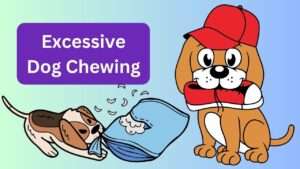
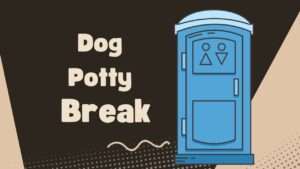
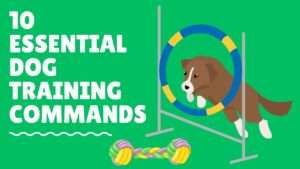








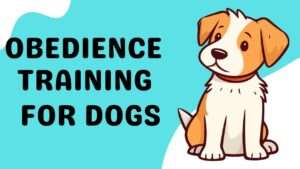



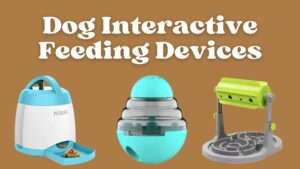

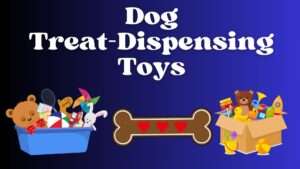

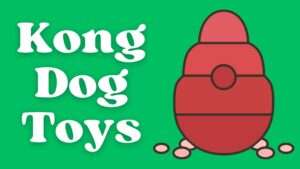







+ There are no comments
Add yours